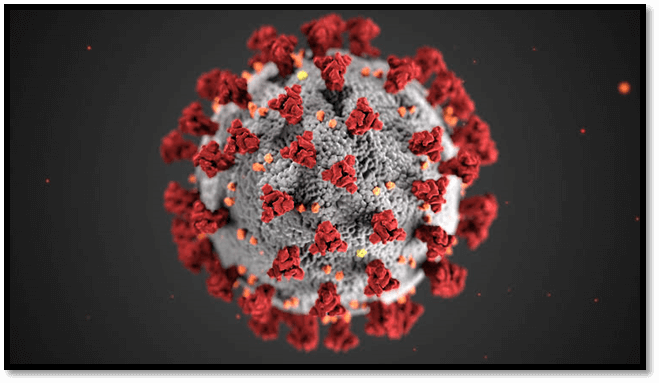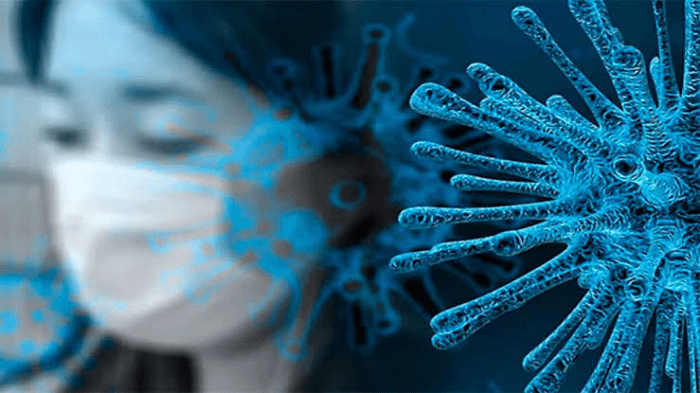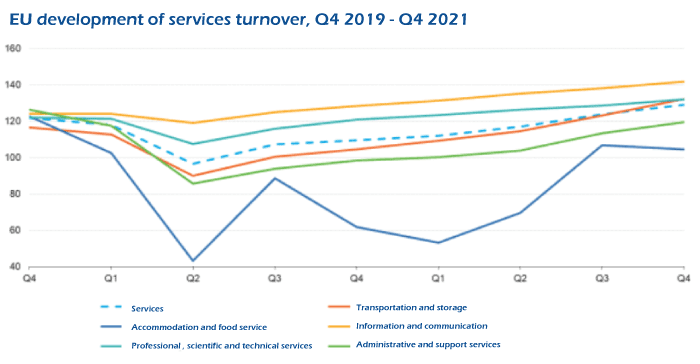Essay On Covid19Since almost two years ago, the world has been discussing Covid-19, also known as the coronavirus. The SARS-CoV-2 virus causes an infectious disease known as the coronavirus. Because of the virus's surface's spikes resembling a crown, they go by the name "Corona." Examples of diseases similar to coronaviruses that infect people include Middle East Respiratory Syndrome (MERS) and Severe Acute Respiratory Syndrome (SARS). In December 2019, Wuhan, China, had the first reports of the new coronavirus strain, SARS-CoV-2. It has since spread to every country in the world. The world has changed to a new normal since the start of the pandemic, where masks are the new accessory and sanitizers are used like sunscreen. 
What is The Origin of Coronavirus?Bats widely carry coronaviruses. Animals do have viruses, but they cannot infect them. Occasionally, these viruses can disperse and infect various other animal species and humans. Viral transmission can lead to virus evolution (mutation). Eventually, the virus has the potential to move from animal to human species. The initial SARS-CoV-2 infections are believed to have occurred in a food store that sold meat, fish, the meat of bats, and other live animals. How Could One Acquire Covid-19?The COVID-19 virus, known as SARS-CoV-2, enters the body through the mouth, nose, or eyes (directly from the airborne droplets or from the transfer of the virus from your hands to your face). The mucous membrane at the back of the throat and the back of the nasal passages are where it goes next. After attaching to those cells, it begins to grow before invading lung tissue. From there, the virus might move to other bodily tissues. How Long Does A Person Infected With Covid-19 Remain Contagious?Even though it may take you a few days to experience symptoms if you have Covid-19, you are still contagious throughout this period. Ten days after offsetting your symptoms, you are no longer contagious. One needs to be very careful and take all the precautions to save themselves from coming in contact with an infected person. The recovered person should take extra precautions to avoid contact with anyone else; they will infect others. There are specific guidelines that one should follow to avoid getting infected; these are as follow -

The Covid-19 SymptomsThe symptoms of Covid-19 are different for every individual. Some infected people show no symptoms at all (asymptomatic). In general, persons with Covid-19 report some of the following symptoms:
Symptoms could start showing up two to 14 days after virus contact. Similar symptoms exist in children; however, they are typically less severe than in adults. A more significant Covid-19 consequence is likely in older folks and those with underlying severe medical issues. LockdownWhile government orders to stay at home undoubtedly have an impact on many different business types, particularly those that offer in-person services (such as retail stores, restaurants, hotels, amusement parks and museums, medical centers, salons, parlors, and spas), other pressures also exert pressure on those companies. In the United States, people started altering their spending habits 10-20 days earlier their local authorities issued stay-at-home orders. By May, however, smartphone data showed that changes in people's mobility rates did not always correspond to changes in local regulations. Effect On EconomyWide-ranging economic effects of the Covid-19 pandemic include
Compounding geopolitical, economic, and ecological factors, such as the high heat, flooding, and drought brought on by climate change, contributed to the crises that were intensifying in various regions of the world. These crises came after the Covid-19 pandemic's food security and financial crises. The economic effects of the pandemic are anticipated to increase child marriage and sexual exploitation, making women and girls in refugee situations and weak economies particularly susceptible. Access to food in the most disadvantaged nations may be seriously jeopardized by the probable combined effects of Covid-19 on unemployment, household purchasing power, food costs, and food supply in local markets. 
Economic Effect On IndiaThe Indian economy shrank by 7.3% in the April-June quarter of this fiscal year, according to official figures released by the Ministry of Statistics and program implementation. Since the ministry began compiling quarterly GDP statistics in 1996, this is the most significant decline ever recorded. Following the implementation of the lockdown, approximately 10 million migrant laborers returned to their home countries in 2020. The fact that neither the state administration nor the federal government had any information about the migrant workers who lost their jobs and their lives during the lockdown, however, was shocking. The government did more than merely establish a digitized, centralized database system for migrant workers who returned to their home countries during the second wave of the corona. Existing weaknesses in the Indian economy have been forcibly revealed and worsened by the second wave of Covid-19. The $2.9 trillion Indian economy remains closed throughout the shutdown, except for a few necessary services and activities. The lockdown severely slowed the economy as stores, restaurants, factories, transportation services, and business premises closed. The global pandemic has disproportionately affected the unorganized segments of the economy. If the informal sectors are considered, India's GDP reduction from April to June may have exceeded 8%. The main drivers of India's economic growth are private consumption and investments.Except for agriculture, all of the major economic sectors were severely impacted. Before the second wave even arrived, the Indian economy was in trouble. Covid-19 has highlighted and exacerbated already-existing disparities in the Indian economy, especially when combined with the humanitarian catastrophe and the government's silence. A recession is unavoidable as the economy will continue to decline during the ensuing four quarters. Everyone agrees that the Indian economy would shrink for the entire year. According to studies by the Centre for Monitoring Indian Economy, unemployment rates rose sharply during the April-June 2021 quarter, from 7.9 percent to 12 percent. COVID-19 VaccinesThe structure and operation of coronaviruses that cause diseases like the Middle East Respiratory Syndrome (MERS) and Severe Acute Respiratory Syndrome (SARS) were well understood before the Covid-19 pandemic (MERS). This information sped up the creation of various vaccination platforms in the first half of 2020. The main goal of SARS-CoV-2 vaccinations was to prevent symptomatic illness, which is frequent and very serious. The genetic sequence data for SARS-CoV-2 was made available through GISAID on January 10, 2020, and by March 19, 2020, the global pharmaceutical industry had made a significant commitment to combat Covid-19. Through emergency use authorization, the first COVID-19 vaccinations were created and made accessible to the general population in 2020. With the Janssen Covid-19 vaccine being the lone exception, most Covid-19 vaccinations were initially two-dose vaccines. However, it has been discovered that vaccine immunity wanes with time, necessitating booster doses of the vaccine to retain immunity against Covid-19. The Covid-19 vaccinations are primarily recognized for helping stop the disease's spread, severity, and fatality rates. In 185 nations and territories between December 8, 2020, and December 8, 2021, Covid-19 immunizations averted an estimated 14.4 to 19.8 million deaths, per a June 2022 study published in The Lancet. Many nations adopted staggered distribution strategies prioritizing individuals most vulnerable to problems, such as older people, and exposure and transmission risks, like healthcare personnel. The discomfort, redness, rashes, inflammation at the injection site, weariness, headache, chronic fatigue, and arthralgia (joint and muscle pain) are common adverse effects of Covid-19 vaccinations. These side effects usually go away on their own in a few days. The risk of side effects from Covid-19 vaccinations is not heightened during pregnancy or breastfeeding. Young women's menstrual cycles have been found to vary temporarily; however, these changes are "minor compared with natural fluctuation and swiftly reverse." Allergic responses are severe adverse event linked to the Covid-19 vaccine that is typically rare but of great public importance. The World Biggest Successful Vaccination ProgramIndia administered more than 1 billion vaccines to the people. The vaccination was done in a record period with ease, paperless, and free of cost. The registration and paperwork were made online. It had been expected vaccinating more than 1 billion people would take more than 2 years, but it showed the world that it could achieve its target when people are determined, united, and dedicated to fighting the covid. However, the start was not good. But it ended on a positive note. It is a matter of pride that all the vaccines administered to the people of India were indigenous and developed by Indian Pharmaceutical manufacturers. In the beginning, the world doubted the effectiveness and efficacy of the Indian vaccines; some imposed sanctions or looked with immense suspicion and scrutiny, and even World Health Organisation consumed a lot of time to authorize its emergency use. The administration of vaccines was also decentralized, with ambiguous roles of the state and chaos. The States lacked the expertise, experience, and finance to support their vaccination program. At that time, Covid was mutating, spreading exponentially, and pushing the healthcare system to its breakdown. States were also confused about whether vaccines would be jabbed free of cost or reasonable price should ask from the citizens. Government officials were also confused about the criteria for administering vaccines, who should be vaccinated first, how to streamline the supply chains, maintain crowds, and identify the neediest. These were some of the crucial questions that states were facing. The Central Government stepped in after seeing the chaos. The role of the Central Government became crucial as the states started to look after the Central Government for unhindered conditions, funds, availability of vaccines, distribution of vaccines, and vaccine administration policy. The Central Government first vaccinated frontline workers (Police, Sanitation, Army Personnel), Healthcare and Paramedical Staff. Later it came out with a robust, sophisticated, and user-friendly portal (Cowin) to streamline the registration process, real-time database, and proper and credible data availability. Central came up with a reliable and robust portal for the registration process. People had to feed their Mobile numbers for OTP (One-Time-Password) and other details like Adhaar Card, Pan Number, Voter ID, etc. These details were asked to maintain proper and real-time data so that the exercise could run smoothly. All the covid vaccination-related information was also available for the citizen's help. The Vaccination Programme did not see significant chaos, confusion, and disruptions as the Central Government well-coordinated with State Government for the vaccine Administration. Mass Awareness campaigns were laid out to eliminate vaccine hesitancy. Slowly, all the citizen received their vaccines on time. ConclusionThe world faced one of the deadliest, most fierce, and most horrific Covid Pandemics that took millions of lives. After the enforcement of the lockdown, the world came to a standstill, and people were locked up inside the home. Health and Hospital were under extreme strain; dead bodies piled up in the mortuary room. The economy was in a shamble, and the covid-induced lockdown slowed economic growth to a historic low. The student lost their precious two years of learning owing to various reasons. It immensely impacted people's mental health as the employed person constantly feared getting layoffs. On the positive end, it has also taught some lessons, like we should never underestimate, undermine and erode nature as nature has its own to bounce back and balance itself. It also set the motion for newer concepts like Work from Home (WFH), Online Learning, and the Importance of Health.
Next TopicMy Favourite Game Essay
|
 For Videos Join Our Youtube Channel: Join Now
For Videos Join Our Youtube Channel: Join Now
Feedback
- Send your Feedback to [email protected]
Help Others, Please Share









